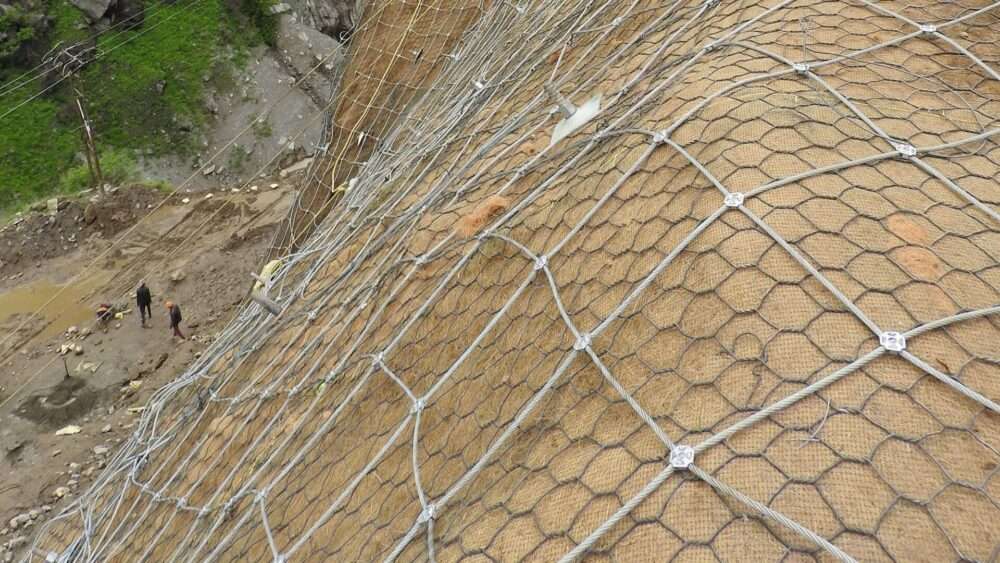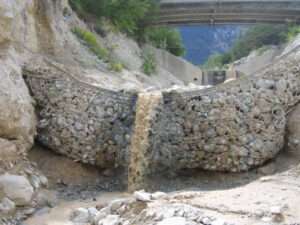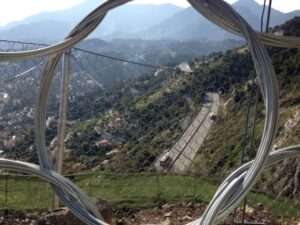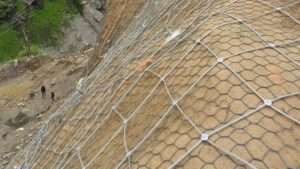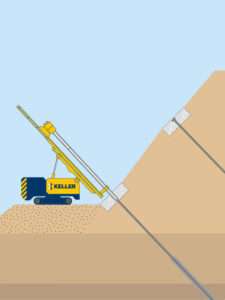Introduction
Rockfalls pose significant hazards in mountainous regions, roadways, and construction zones. To mitigate these risks, geotechnical engineers employ high-tensile wire mesh as a primary reinforcement method. This flexible yet durable solution helps prevent rock detachment, enhances slope stability, and ensures safety for infrastructure and communities. This article explores the properties, advantages, and applications of high-tensile wire mesh in rockfall protection.
What is High-Tensile Wire Mesh?
High-tensile wire mesh is a specialized steel mesh designed to reinforce slopes and control rockfalls. It consists of interwoven high-strength steel wires, often coated with corrosion-resistant materials to withstand harsh environmental conditions. The mesh is engineered to absorb and dissipate the impact energy of falling rocks, preventing debris from reaching critical areas.
Key Features of High-Tensile Wire Mesh
- High Strength and Durability: Capable of withstanding significant impact forces.
- Corrosion Resistance: Often galvanized or coated for long-term protection against weathering.
- Flexibility and Adaptability: Conforms to various slope geometries and rock formations.
- Energy Absorption: Effectively dissipates impact energy to minimize rockfall damage.
- Lightweight and Easy Installation: Reduces labor and construction time.
Applications of High-Tensile Wire Mesh
High-tensile wire mesh is widely used in different geotechnical and infrastructure projects, including:
- Rockfall Protection: Draped or anchored mesh prevents falling debris from endangering roads, railways, and populated areas.
- Slope Stabilization: Reinforces unstable rock masses and prevents erosion.
- Erosion Control: Maintains surface integrity by reducing soil displacement.
- Mining and Tunneling: Prevents rock detachment in excavation areas.
- Bridge and Infrastructure Protection: Shields critical structures from rock impacts.
Installation Methods
The efficiency of high-tensile wire mesh depends on the installation approach:
1.Draped Mesh Installation: The mesh is laid over a slope, allowing debris to settle at a designated area while preventing rock detachment.
2.Anchored Mesh Installation: Secured with rock bolts or anchors to reinforce loose rock formations.
3.Hybrid Systems: Used in combination with rockfall barriers, retaining walls, or shotcrete for enhanced slope protection.
Benefits of High-Tensile Wire Mesh for Rockfall Protection
- Cost-Effective: Reduces maintenance costs compared to rigid barriers.
- Environmental Compatibility: Maintains natural slope aesthetics while providing protection.
- Long-Term Stability: Engineered for durability in extreme conditions.
- Customizable Solutions: Available in various sizes and strengths to meet project requirements.
Conclusion
High-tensile wire mesh is a highly effective and versatile solution for rockfall protection and slope stabilization. Its ability to reinforce unstable slopes, absorb impact energy, and prevent rock detachment makes it a preferred choice for engineers worldwide. By implementing the right mesh type and installation method, geotechnical professionals can enhance slope safety and ensure long-term stability in hazardous terrains.


